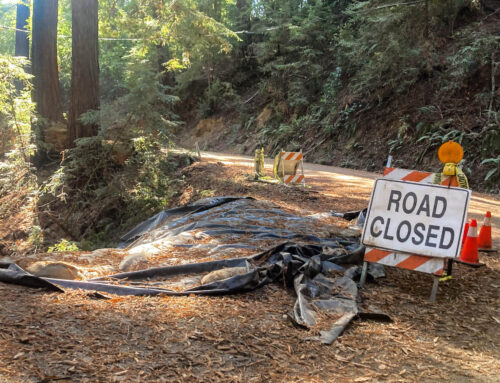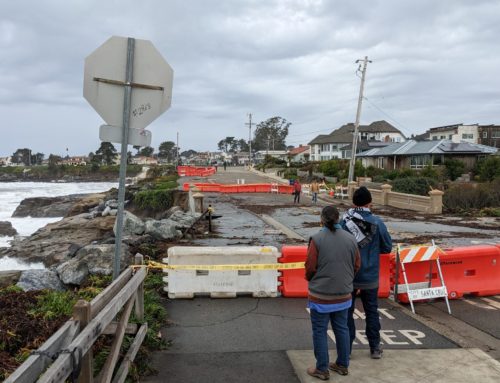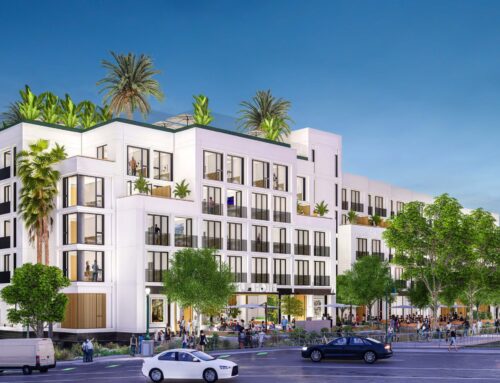SANTA CRUZ >> A threat of lawsuit prompted a delay of the Santa Cruz City Council’s decision on a plan that would guide potential expansion of the Santa Cruz Municipal Wharf.
Following a staff recommendation, the council voted unanimously Tuesday to delay discussion of the Wharf Master Plan until the council’s Nov. 24 meeting.
The plan calls for an expansion of the wharf by about 2.5 acres, including:
- Three new public buildings that total 15,000 square feet
- A new promenade on the east side of the wharf
- A new walkway on the west side of the wharf
- Two new boat landings
- Piling repairs
- Relocation of the wharf entrance and more parking
City leaders have said that the plan’s approval would allow city staff to seek grant money for necessary repairs. About $11.6 million of repairs are needed, according to an engineering report.
A letter from North Bay attorney Susan Brandt-Hawley was emailed to council members Monday. Brandt-Hawley represents Don’t Morph the Wharf, a community group that led a petition in 2016 to oppose parts of the Wharf Master Plan.
The letter urged the council to deny the plan. It called for the elimination of the proposed western walkway and a proposed public building, and the reduction of the maximum height of new buildings to 30 feet.
Brandt-Hawley wrote that the plan needed more environmental review of the potential aesthetic impact of development. Also, the plan needed to better outline preservation of the sea lion viewing holes, Brandt-Hawley wrote.
Planning Director Lee Butler and other staff members recommended that the council delay discussion of the master plan, to give the staff more time to analyze the legal issues.
“We don’t want to miss something and then have to start over from scratch six or eight months from now through a lawsuit as a result of not putting this off for a short period of time,” Butler said in the meeting.
Several council members on Tuesday were dismayed with the delay.
“To say that this is disappointing is just so far inadequate,” Councilmember Cynthia Mathews said. Years of work have gone into the environmental review and related processes, she said.
“I think probably most members of the public don’t realize how really demoralizing this is to folks who have worked on trying to preserve the wharf,” Mathews said.
Mayor Justin Cummings said, “We really need to get this master plan approved so we can access state funds and begin to do some of the necessary improvements so we don’t lose our wharf.”
Riverfront housing proposal decision delayed
Tuesday, the council also unanimously delayed a decision on approval of the Riverfront housing proposal, due to a last-minute opposition letter from the California Coastal Commission. Discussion of the proposal is now scheduled for the council’s Dec. 8 meeting. City staff said they will attempt to meet with Coastal Commission staff in advance.
The proposal calls for a seven-story mixed-use housing project on the east side of Front Street between Cathcart Street and Soquel Avenue. Three proposed buildings would have 175 condominiums, likely rentals, above commercial space that opens to Front Street and the San Lorenzo Riverwalk. Two pedestrian promenades would connect Front Street and the Riverwalk.
- Twenty units would be affordable — meaning they would be required to be offered at lower prices for people with low incomes and very low incomes based on the area median income.
- A local developer, Owen Lawlor, applied for a density bonus under state law. That allows the project to build more stories and units than the zoning allows. In return, the developer must offer 15 of the 20 required affordable units to people with very low incomes.
In a five-page letter to the council emailed Tuesday afternoon, Coastal Commission Central Coast District Supervisor Ryan Moroney wrote several concerns, including:
- The proposed buildings’ “mass and scale” exceed what the Local Coastal Program allows, Moroney wrote. As part of Local Coastal Program updates in 2018, the Coastal Commission approved downtown zoning changes that allow for taller, denser housing.
- The state’s density bonus law does not supersede the Local Coastal Program, Moroney wrote. Protection of coastal resources “must still be adhered to in all cases,” he wrote. Moroney did not specify how the project’s proposed height impacts coastal resources.
- Moroney also wrote that the city’s recently updated inclusionary housing law requires more affordable units than proposal offers. The council this year increased the number of affordable units that developers are required to build. Developers now need to make 20% of new units available at affordable rates to people with lower incomes. Previously, developers had a 15% requirement. City staff disagree — the proposal was completed before the new law took effect and the new law does not apply, they said.
City staff, including Planning Director Lee Butler, said that Moroney’s letter included several inaccuracies, including the building height that city code allows.
“I will be blunt here and say that I expect that, based on the tone of this letter, that there may be some issues in which we agree to disagree on. And it may ultimately be up to the California Coastal Commission themselves,” Butler said. “I, for example, do not see that there is a visual impact associated with this, and we talked about that as part of the environmental impact report.”
Approval of the project rests on the city council and the Coastal Commission, since the project is within the coastal zone.
Coastal Commission staff did not respond to a request for comment Tuesday.
Editor’s note: This story has been updated to clarify which walkway Susan Brandt-Hawley’s letter called for to eliminate. It is the western walkway. This story has also been updated to clarify that the Brandt-Hawley Law Group sent the letter to the whole council Monday.
Kara Meyberg Guzman is the CEO and co-founder of Santa Cruz Local. Prior to Santa Cruz Local, she served as the Santa Cruz Sentinel’s managing editor. She has a biology degree from Stanford University and lives in Santa Cruz.





